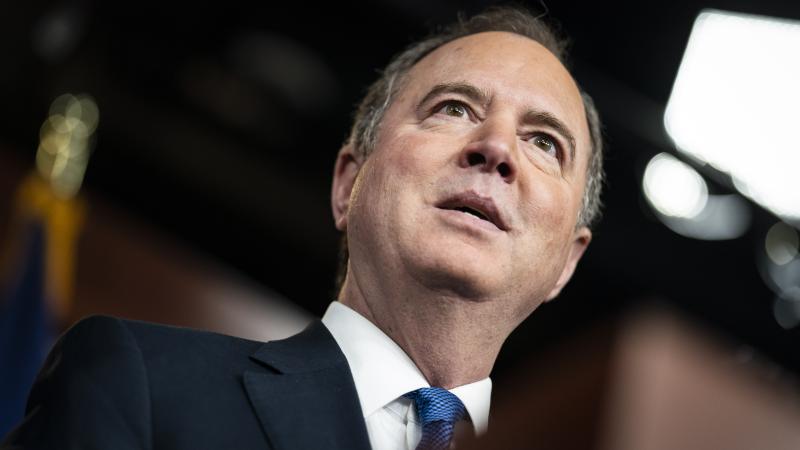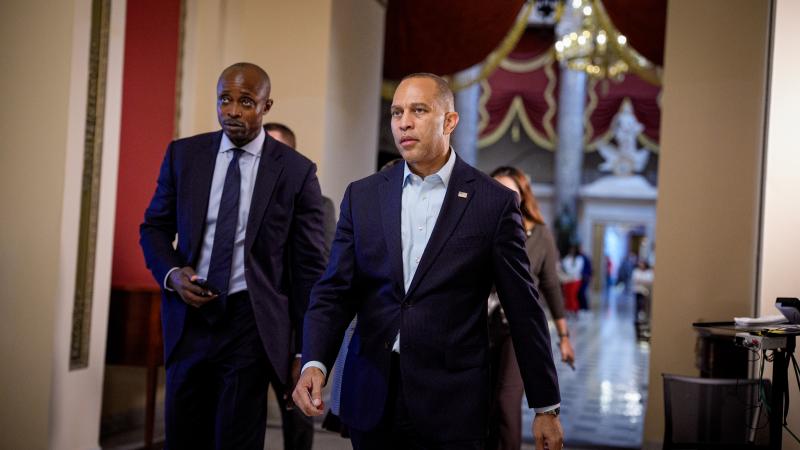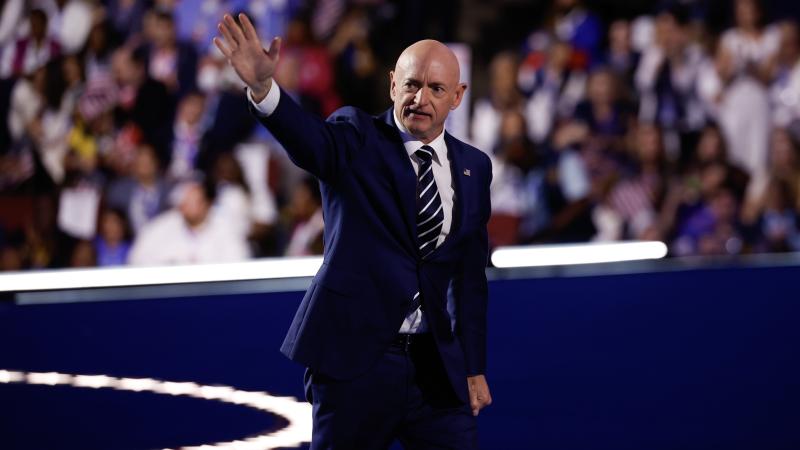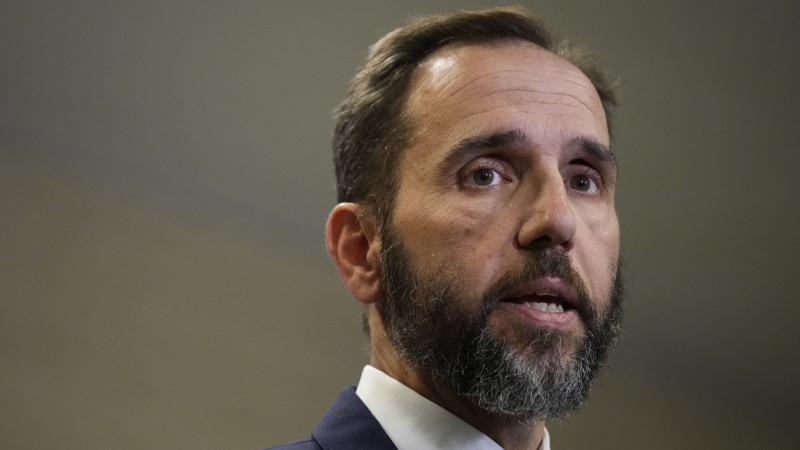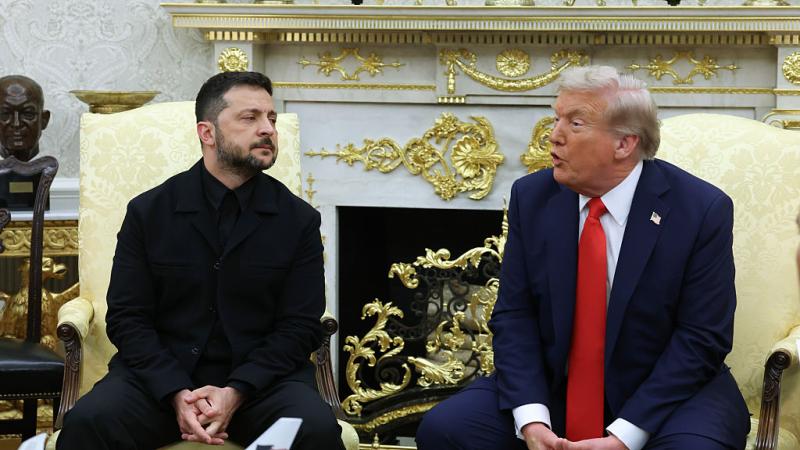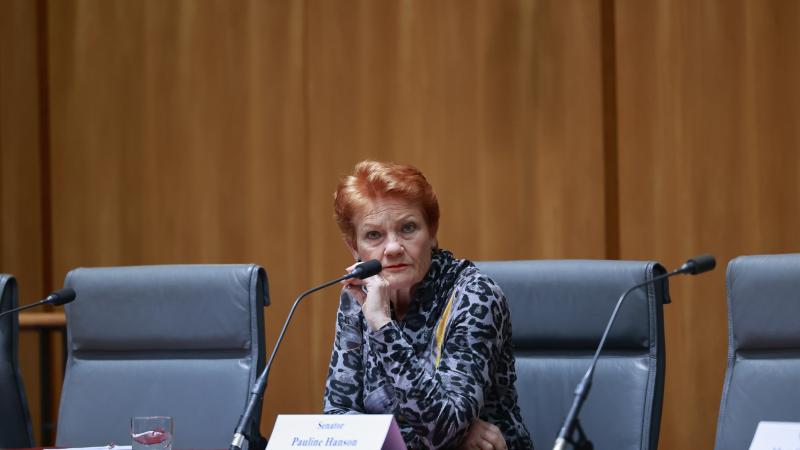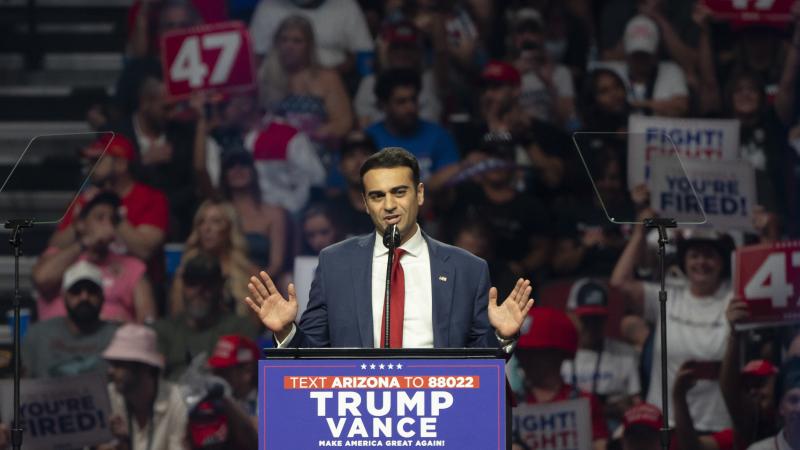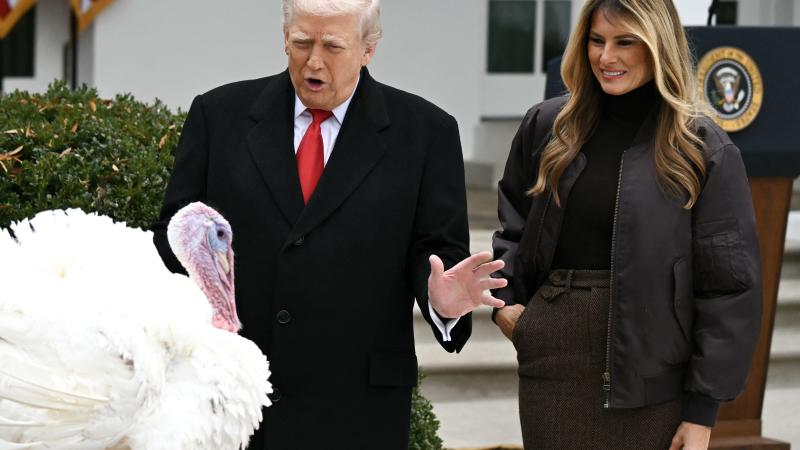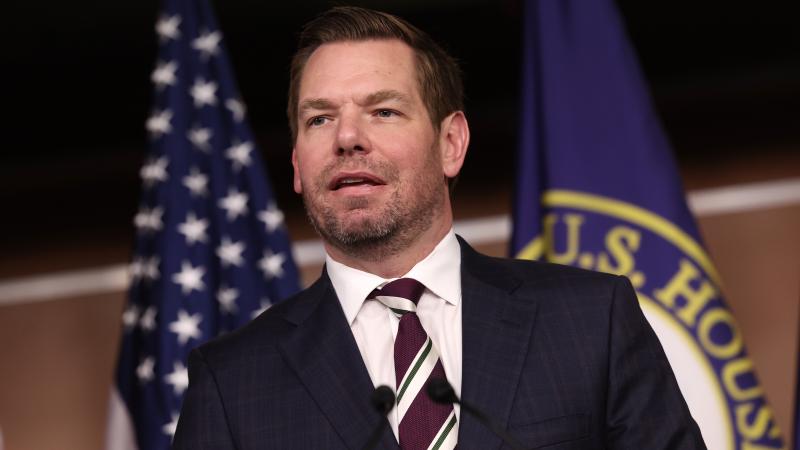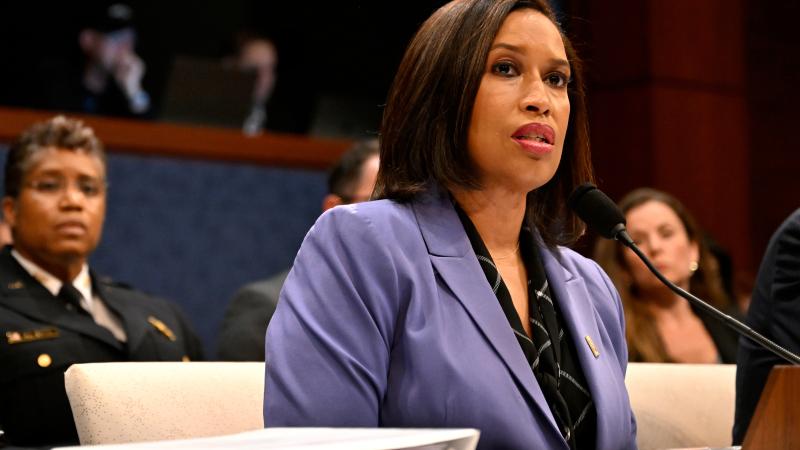Federal Reserve’s fiscal management shamed over ballooning $2.5 billion office renovation
The president and his administration could be laying the groundwork to remove Chairman Jerome Powell for cause.
The ballooning price tag for the $2.5 billion renovation of the Federal Reserve’s Washington, D.C. headquarters has become the pressure point for efforts by President Trump and his administration to force the central bank’s chairman, Jerome Powell, to either lower interest rates or step aside.
Since the beginning of his second term, Trump has repeatedly criticized Powell—who he himself nominated to run the nation's central bank during his first term—for the board’s refusal to lower interest rates, a decision the president and his advisors believe is holding back economic growth. Trump has escalated his attacks in recent weeks, even floating the idea of removing Powell from his role before his term expires in May 2026.
Now, administration officials have zeroed in on the Federal Reserve’s renovation project to put pressure on Powell. The Federal Reserve Act, which established the central bank, grants the president the power to nominate the chairman for one four-year term from among the bank’s current governors. However, the law only provides the president with the power to remove the chairman “for cause.” Federal courts have historically interpreted this to mean serious misconduct as the Supreme Court defined it in Humphrey’s Executor v. United States in 1935.
Though an agency designed to have considerable independence from politics, the Federal Reserve is still overseen by Congress. For years, the Federal Reserve had long maintained that the Freedom of Information Act did not apply to them, using the law's exemption for "trade secrets" or "financial information," arguing that, if the information is exposed to public scrutiny, it would harm the public's trust in the banking system.
Nonetheless, hard-fought court cases established a strong legal precedent requiring transparency from the Fed. In the 2008 landmark case Bloomberg L.P. v. Board of Governors of the Federal Reserve System, the courts required the Fed to disclose a journalist's requests for records detailing a secret giveaway by the Federal Reserve of billions of tax dollars to banks in 2008, just weeks before the epic market meltdown triggered by the collapse of Lehman Brothers.
OMB: "Ostentatious overhaul"
Trump’s Director of the Office of Management and Budget, Russ Vought, sent a letter to Powell that appears to be an attempt to lay the groundwork for establishing a cause to remove him. In the letter, Vought alleged Chairman Powell mismanaged the multibillion-dollar renovation at the bank’s headquarters, which has so far run $700 million over budget.
“The President is extremely troubled by your management of the Federal Reserve System,” Vought wrote. “Instead of attempting to right the Fed's fiscal ship, you have plowed ahead with an ostentatious overhaul of your Washington D.C. headquarters.”
Vought accused Powell of approving extravagant features—including “rooftop terrace gardens, VIP private dining rooms and elevators, water features, premium marble”—and claimed the project is further evidence of an ongoing pattern of fiscal mismanagement at the bank.
Further, Vought suggested that Powell may have misled Congress in his testimony about the renovations when he denied these allegations.
Some Members of Congress are buying into Vought’s argument. Congressman Abe Hamadeh, a close Trump ally, believes the president now has just cause to fire Powell before his term as the Federal Reserve chairman ends in May 2026 due to the allegations of “gross mismanagement” of the central bank’s renovations.
“[What] we have is a Federal Reserve Chairman who's in charge of monetary policy, and he's effectively curtailing the successes of bringing in this golden age era that President Trump wants to usher in. And on top of that, you have Jerome Powell just a few weeks ago, talk[ing] about the renovations at the Federal Reserve building—$2.5 billion, $700 million over budget, for a building here in the Capital…right across the National Mall,” Congressman Hamedeh told the Just the News, No Noise TV show.
“It is despicable to see the gross mismanagement of funds that the Federal Reserve Chairman has been doing,” he continued. “I think he can be fired for cause at this point.”
He reiterated, “I think President Trump has the ability and the scope of powers to actually fire Jerome Powell.”
Fed denies wasteful spending on itself
Powell has pushed back on the president and his officials and denied their underlying claims during his testimony to Congress last month. In order to head off escalating criticism from the White House, administration officials, and Congress, Powell reportedly asked the Federal Reserve’s independent inspector general to review the $2.5 billion headquarters renovation.
The Federal Reserve also quietly published a Frequently Asked Questions page about the renovations challenging claims by Vought and Members of Congress about the project. The page denies claims that parts of the budget are being dedicated to “VIP dining rooms,” private elevators, rooftop gardens, and new water features. Instead, the central bank says that cost overruns primarily stem from fluctuations in materials costs, asbestos removal, toxic contamination in soil, and adjustments after consultations with review agencies.
The Federal Reserve and its chairman find themselves in a bind to alleviate pressure from the president over interest rates while adhering to their mandate and long-held models. The Federal Reserve, governed by its mandate to keep price levels stable and facilitate full employment, will find it hard to cut interest rates. The Fed normally lowers rates when unemployment is rising or inflation has consistently met its 2% target. Despite a decline in the inflation rate from its recent highs, the measure still remains above the Fed’s target.
On Tuesday, the Bureau of Labor Statistics released new data that will further complicate the Fed’s maneuvering. The data showed the inflation rate rose 2.7% from a year earlier, slightly higher than predicted and an increase from the 2.4% rate measured in May.
When the central bank was established in 1913, it was given a triple mandate from Congress: maximize employment, stabilize prices, and set interest rates. Congress intended the bank to help stabilize a financial system that, at the time, had been beset by a string of financial crises that lawmakers believed exposed dangerous weaknesses.
The great balancing act
The most recent jobs numbers from June, which showed strong growth and shrinking unemployment, would, under normal circumstances, encourage the Fed to hold interest rates steady. The conflict between the Fed’s interest rate policy and President Trump’s demands comes from the Reserve Board’s efforts to combat the high inflation that characterized much of the Biden-era economy, Just the News reported earlier this month.
Raising interest rates helps to temporarily boost employment and will eventually reduce demand, cooling inflation. However, employment rates are currently still increasing while inflation continues to cool, the opposite of the Fed’s optimal conditions for rate cuts.
This has put the Federal Reserve into direct conflict with President Trump, who strongly believes inflation is low enough to sustain rate cuts—cuts that he believes will give a needed boost to the economy. “The U.S. Federal Reserve should cut interest rates by a full percentage point… Europe has had 10 rate cuts, we have had none. Go for a full point. The Fed could always raise rates again if cuts led to inflation,” Trump said in early June.
Critics of the Federal Reserve’s current policy believe the central bank is operating based on outdated models that are not serving the interests of Americans and do not align with the modern economy. A central problem, former World Bank President David Malpass told Just the News, is that the central bank’s models treat fast economic growth as a negative.
“The economy is doing well, the rates are too high—they should be cut,” Malpass said. “But, you know, the Fed's models just don't allow that the way they're set up right now. They look mindlessly at the CPI inflation or the core PCE deflator, and they say, well, it's still too high.”
He said, “ growth is too fast in their mind,” explaining that the “core problem at the Fed” is that “they think growth is bad.”
The Fed's models are the malady
Malpass argues that the Fed should redesign its models to treat growth in a positive way because prioritizing economic growth “makes us better able to pay our debt” and “lower the interest rates.”
“[You] just really have to say, throw that model away and give us a model that gives us a stable dollar and lower interest rates,” Malpass concluded.
The former World Bank head, however, doesn’t believe that Powell and the current board of governors has the motivation or the willingness to change the models. “They're kind of happy with what they've done,” Malpass said of Powell and the bank’s effort to fight inflation by maintaining elevated interest rates.
Powell has defended the bank’s rate decisions and has pushed back on Trump’s allegations that the board’s decision to maintain rates is a political one.
“In effect, we went on hold when we saw the size of the tariffs, and essentially all inflation forecasts for the United States went up materially as a consequence of the tariffs," Powell said at a meeting of central bankers in Portugal. "So we didn't overreact — in fact, we didn't react at all. We're simply taking some time.”
He also emphasized that the central bank is only successful at delivering financial stability for Americans when it operates in a “completely nonpolitical way.”
The Facts Inside Our Reporter's Notebook
Links
- the nation's central bank
- grants the president the power
- historically interpreted this to mean serious misconduct
- sent a letter to Powell
- Bloomberg L.P. v. Board of Governors of the Federal Reserve System
- collapse of Lehman Brothers
- testimony to Congress last month
- to review the $2.5 billion headquarters
- a Frequently Asked Questions page
- adhering to their mandate and long-held models
- released new data
- a triple mandate from Congress
- Trump said in early June
- said at a meeting of central bankers
